Updated on May 12, 2021 4:40:42 PM
How can you improve efficiency on your production line? It’s a question that everyone from Supervisors and Factory Floor Managers to Managing Directors is asking. Far from there being a single solution, it will inevitably vary depending on the industry you work in, as well as the size of your factory, the level of production and the products themselves.
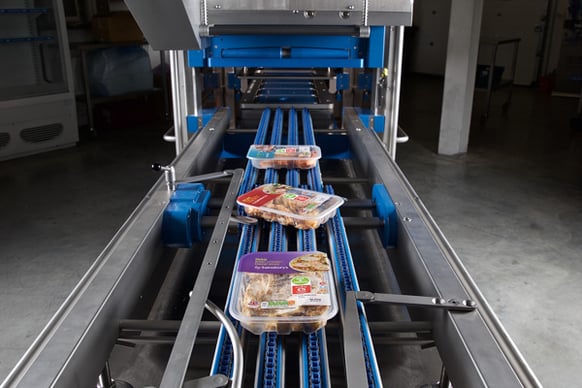
However, having worked with hundreds of food packaging and processing suppliers over many years, we’ve noted some common best practices that will apply to every circumstance and in this blog, we’ve managed to break this down into 5 areas of focus to improve efficiency on your production line.
#1: Reliable equipment
It goes without saying that without reliable equipment, your efficiency will suffer. Evaluating the performance and reliability of existing equipment should be where you start.
Accurately measuring Overall Equipment Effectiveness (OEE) is a key first step. Let’s start with a quick refresher as to how best to calculate OEE. There are two common ways to calculate this. Whilst either method can be used, as you will see, one calculation will give you more valuable insights.
The simple calculation:
OEE = (Good Count × Ideal Cycle Time) ÷ Planned Production Time
Working out the ratio of fully productive time to planned production time is the simplest way to calculate OEE. Fully productive time is the manufacturing of only good parts (good count) as fast as possible (ideal cycle time).
Whilst this is a completely valid calculation of OEE, it won’t leave you with any information on availability, performance and quality. That’s where the other method of calculating OEE scores can help.
The preferred calculation:
OEE = Availability x Performance x Quality
Availability = Run time/ planned production time
Your run time is your planned production time – stop time (unplanned or planned).
Performance = (Ideal Cycle Time) x Total Count/ Run Time
Your ideal cycle time is the fastest possible cycle time that your process can achieve under optimal circumstances.
Quality = Good Count/Total Count
Measuring quality accounts for all of your losses of products that failed to successfully pass through the manufacturing process the first time round.
Whilst the simple OEE calculation provides a valuable insight into how effectively your manufacturing process is running, this method doesn’t offer any insight into the possible causes of lost productivity. That’s where availability, performance and quality come in and by using the preferred calculation method you get all of this detail. This will highlight where the possible loss of productivity can be attributed to, so improvements can be made in a specific area/s.
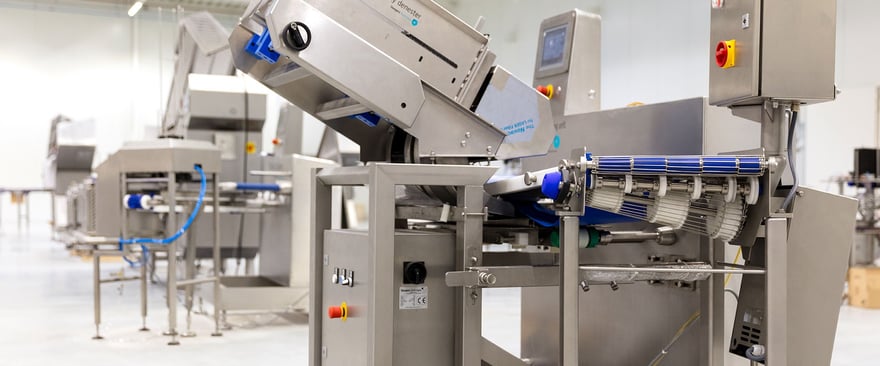
Higher quality equipment may be more of an investment, but it’s important to recognise that paying more in the short term may significantly reduce future costs of downtime and emergency call outs.
It’s also vital to ensure that you maintain equipment through regular servicing and checks. Preventative maintenance can help to ensure longevity of equipment life and also help to increase performance levels and have a positive impact on cycle times.
#2: Good training
You can invest in the highest quality machinery on the market but unless your employees are sufficiently trained and confident in how to use it, your level of production line efficiency will be impacted. For this reason, when measuring production line KPIs (Key Performance Indicators), training should not be ignored.
Investing in people makes them feel valued and increases morale and motivation on the factory floor. A motivated workforce is committed to doing the best job. Although all factory floors have a supervisor, it’s important that you can trust your employees to always give 100% effort even when a supervisor is out of sight.
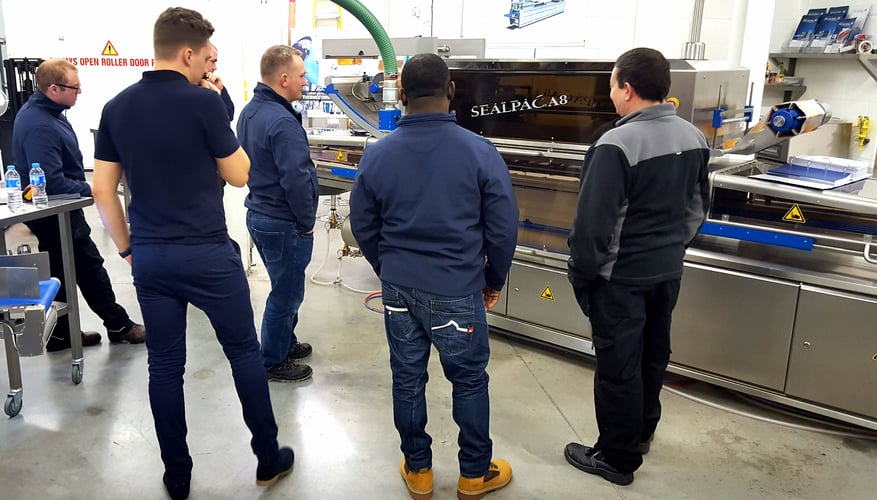
SEALPAC machine training at Sealpac UK & Partners
At Sealpac UK & Partners, we have noticed a direct correlation between customers who keep employees up-to-date with training and increased efficiency. That’s why we would always recommend that this is an area you invest wisely in.
Look for an equipment supplier that offers regular training as part of their after-sales support process, as this will help to keep you aware of any updates in the industry. It will also ensure you have a reliable and accurate training program in place for anybody new joining the business.
Good training is an investment and should be considered an integral part of your total quality management. If your workforce is well-trained in using the equipment to its optimum performance level this can have a huge positive impact on your cycle times.
Read more: Why is training important?
#3: High-quality after-sales servicing
Having an excellent after-sales service from your supplier is integral to the smooth-running of your production line. In the event of a machine breakdown, the knock-on impact of the increased level of downtime can affect not only your production output, but it can also have a long-term impact on your relationship with your customer.
We all know that not achieving committed levels of output can lead to costly fines. However, the impact of the breakdown in customer relationship and trust is a far greater cost.
Most companies offer an after-sales service alongside the purchase of any new piece of equipment, so a good after-sales support service should be high on your list throughout the purchasing process. Quality after-sales servicing requires investment from your supplier, and so this is not a wise area to cut costs.
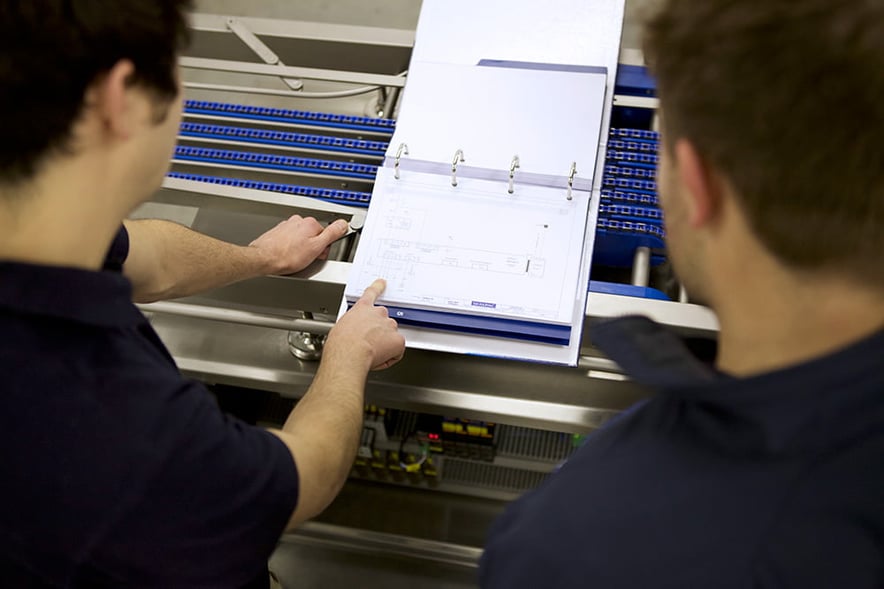
Find out more about after-sales support with Sealpac UK & Partners
Support from a team of reliable engineers as well as rapid access to spare parts can mean that equipment can be up and running again in next to no time. This reduces downtime and ensures you can still meet customer demands.
Sometimes it can be as simple as receiving telephone support and advice from your after-sales service provider when ordering spare parts. However, when you are in a real crisis, you need to know that your supplier “has your back” and is as committed as you are to getting you back to peak performance. Knowing that you have a quality and reliable service contract in place can leave you with complete peace of mind.
#4: Accurately measuring Takt Time and Downtime
Often referred to as the heartbeat of a production line, takt time is the rate at which products or services should be produced to meet the rate of customer demand. Accurately measuring takt time is essential to ensuring that production targets and customer expectations are met.
Takt Time = Available minutes for production/required units of production
Having an accurate measure of takt time and sharing this information on the factory floor means that every member of the team knows what success looks like for each unit of production. Ensuring that your employees have this information means that they are equipped with the information they need to quickly identify if something is threatening the required level of output on the assembly line. The quicker problems are spotted, the faster they can be resolved.
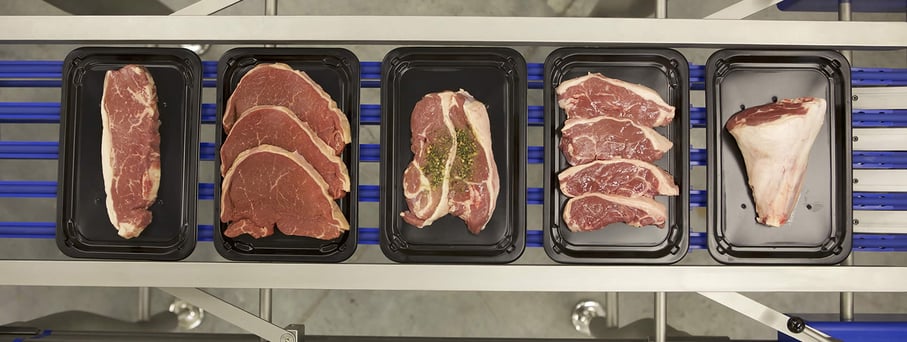
Carefully monitoring takt time can be the difference between hitting targets and experiencing machine downtime. Typically, downtime refers to any unplanned stop that is 5 minutes or longer. This can occur if a piece of equipment fails or breaks down.
Downtime can have a huge impact on the efficiency of your production line affecting targets, productivity and profitability so it’s vital to get this right. Although downtime can be product dependent and vary significantly between different industries, it’s important to know what downtime means for your business and what level to aim for if you are going to look at increasing line efficiency.
In a factory where there is a single dry food being fed through a production line and there’s no need to factor in time for a product switch/changeover or resetting a machine, a good efficiency rate might be anywhere between 90% up to 99%. In contrast, if lots of different complex foods (e.g. meat with different wet sauces) are being fed through a production line and changes need to regularly be made to the set-up, an efficiency rate of 70% might be very reasonable.
#5: Investing in employees
Finally, when looking at ways to improve production line efficiency, it’s essential to analyse how you invest in people within your organisation.
Your workforce is one of the key variables in your overall return on investment (ROI). It’s important to bear this in mind and recognise the impact that a happy, engaged and motivated workforce can have on your bottom line.
We’ve already covered how important training is, but as well as initial training and regular refresher training on how to use and get the best out of factory equipment, investing in your employees by offering a CPD (Continuing Professional Development) programme is also a good idea.
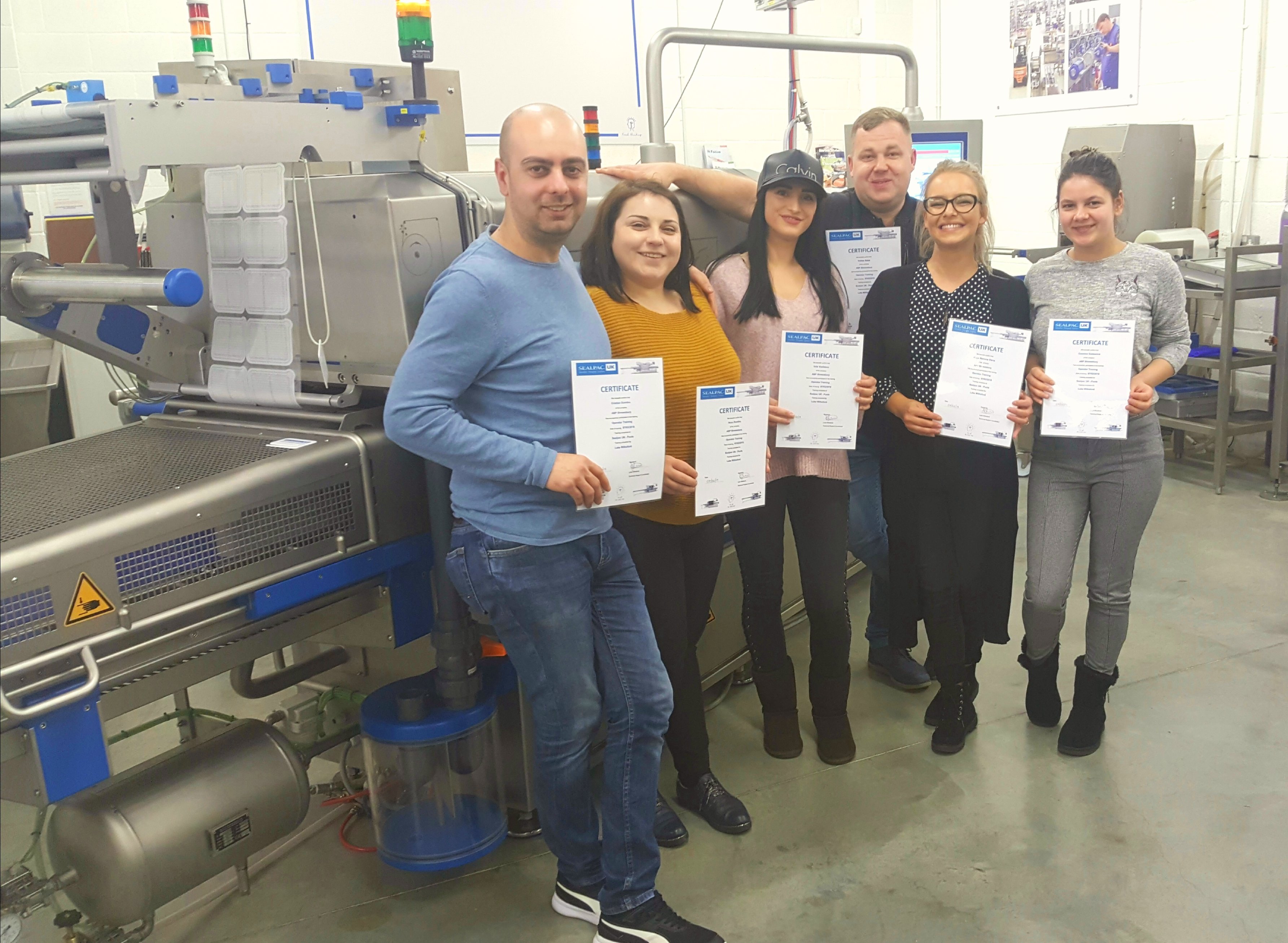
Machine training at Sealpac UK & Partners
Do you have a training and development plan for all your employees? Beyond formal skills training you should proactively seek to harness their skills and experience in business improvement projects across the company. An additional benefit to you that these projects can be an excellent way of identifying employees with leadership potential.
Investing in people means value added to your entire company and done in the right way can lead to continuous improvement on your overall line efficiency and your entire business.
It’s a known fact that employees who feel valued are less likely to look for a new job. A little extra spending on training can also save you the costly process of having to recruit/train new employees. If staff are motivated and loyal to the company, they will go the extra mile to chip in and ensure customer expectations are met when anything goes wrong on the factory floor. If you have a happy and engaged workforce who are motivated to give 100% then you’re certainly off to a good start.
If you'd like some support in optimising your line,
give our friendly team a call on 0845 302 3056 for a free consultation.

